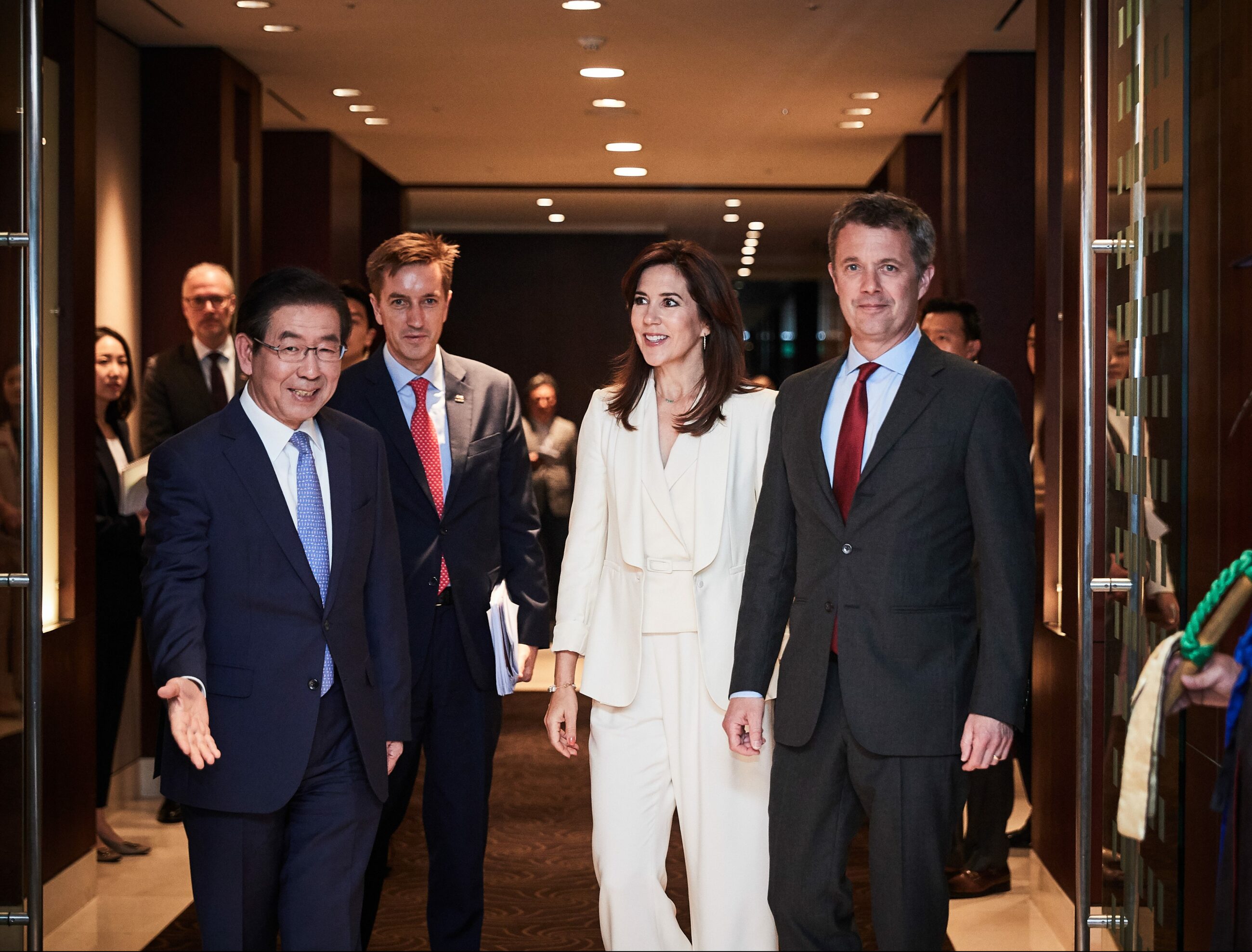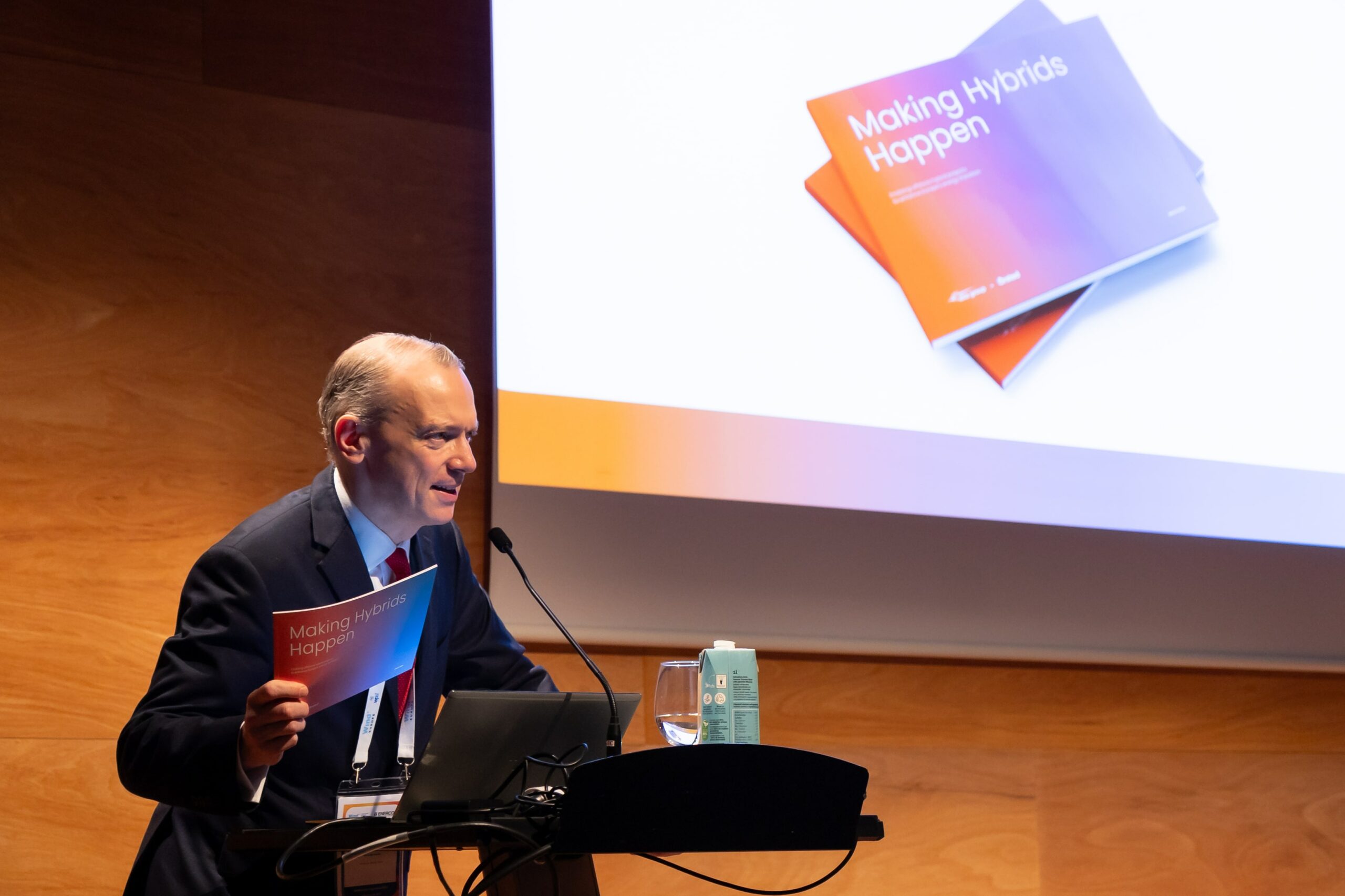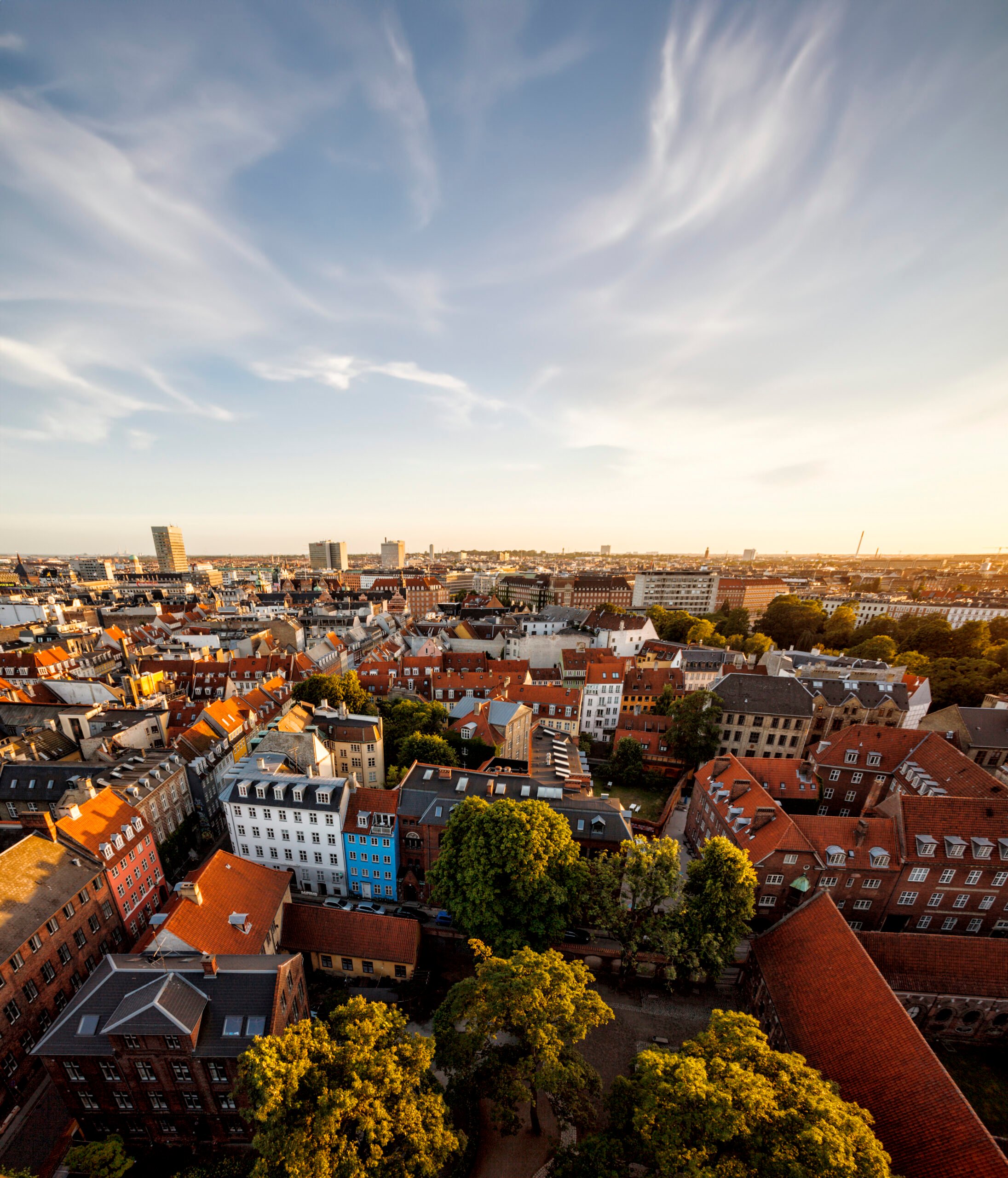News
Buildings
Circular building design
Smart cities
+3
Connecting futures: Denmark and South Korea collaborate to accelerate sustainable growth


This year represents the 60th anniversary of unbroken diplomatic relations between South Korea and Denmark – a milestone which is celebrated by the joint Danish-Korean Year of Culture 2019. The Crown Princess of Denmark, Princess Mary, is the Danish patron of the Culture Year of 2019, which aims to strengthen long-term collaboration and exchange within the culture sphere.
To celebrate the anniversary, the Crown Prince couple of Denmark, Prince Frederik and Princess Mary travelled to South Korea over three days this week, which is their first visit to the country since 2012. Accompanying them was a business delegation consisting of over 45 Danish companies, government authorities and institutions drawn from pillars of strength in the Danish economy; namely sustainability, food, lifestyle and healthcare. State of Green participated in the sustainability track of the visit and has experienced high demand from Korean delegations over the past year, who are particularly interested in visiting Denmark to experience how the country is integrating wind energy into the electricity system and how it ensures sustainable and liveable cities with low levels of air pollution.
Organised jointly by the Royal Danish Embassy in Korea, the Danish Trade Council in Korea, the Confederation of Danish Industries and the Danish Agriculture and Food Council, the aim of the trade delegation was to heighten collaboration, exports and exchange of knowledge in different spheres between the two countries. Given that South Korea is currently Denmark’s 23rd largest export partner and both countries are moving forward on ambitious climate and environmental objectives, there exist strong possibilities for the two countries to heighten bilateral trade and create jobs and prosperity in both regions.
-Related solution: Danfoss powers Asia's first E-ferry
Making progress on South Korea’s plans to install 16.5 GW of wind power by 2030
During the visit, a number of political and commercial cooperation agreements were signed, several of which related to renewable energy. The South Korean government aims to source 20 per cent of its energy from renewables by 2030 and wind power will play a key role in achieving this objective. Currently, the country has a target of installing 16.5 GW of new wind energy capacity by 2030, of which 12 GW of this will be met by offshore wind power. For comparison, Denmark currently has 5.3 GW of wind power.
Denmark already collaborates on energy ,matters with Korea under the auspices of the Danish Energy Agency where the two countries collaborate on greening their energy systems. In November 2018, the two countries signed a Memorandum of Understanding (MoU) on renewable energy and this agreement was consolidated with the signing of an Implementing Arrangement with the Korea Energy Agency during the visit to Korea this week.
The agreement strengthens the cooperation on renewable energy and helps further the green transition in South Korea. At the same time, the Municipality of Esbjerg has signed an agreement to establish cooperation on the field of offshore wind energy with Ulsan Metropolitan City. Both cities are home to their respective countries’ largest working harbour port and it is hoped that Esbjerg’s experiences in transitioning from an oil and gas port to a wind power port may be useful for Ulsan, which is home to a domestic shipbuilding industry.
Denmark’s ambassador to Korea, Thomas Lehmann stated "In Denmark, we have a very long track record for transforming our energy from fossil fuel to renewable energy, especially wind," Lehmann said. "And this is what we want to build on with this royal visit."
From the Danish side, it is hoped that Korean experience with technologies such as hydrogen gas, solar energy and energy storage will provide valuable input for the improvement of the Danish energy sector.
Furthermore, Denmark’s Export Credit Agency, which provides financing for Danish companies venturing abroad and is the world leader in finacing on and offshore wind farms, signed a reinsurance agreement with Korea Trade Insurance Corporation (K-Sure). The agreement aims to make it easier to obtain credit insurance for projects with exports from both countries.
Another cooperation agreement that included sustainability aspects was the one signed by Danish brewery giant Carlsberg with its Korean partner, Golden Blue Co. Ltd. The agreement will result in the launch of new design and sustainable packaging innovations in the country, where shrink wrap packaging that consists of 50 per cent recycled plastic will be utilised.
The focus on wind energy was maintained during a seminar organised jointly by the two countries energy agencies that discussed how to foster Korea’s wind industry in the form of a panel debate. State of Green’s executive director, Finn Mortensen, moderated the debate and representatives from industry heavyweights such as Vestas, Ørsted and MHI Vestas participated in the panel. A key issue discussed during the debate was local content. South Korea would prefer that the increase of wind power capacity in the country is achieved with local content. Danish participants such as the director general of the Danish Energy Agency and the mayor of Esbjerg – Denmark’s fifth largest city and home to the world’s largest port for the wind industry shared experiences on how Denmark has built up its wind industry and enjoyed economic benefits from wind power, even though local content requirements have not been in place.
-Related solution: World's largest offshore wind farm
Prince Frederik reveals he’s not afraid of heights in the world’s fourth tallest building
While the sustainability track of the visit consisted of panel debates, seminars and meetings, it also included site visits. This allowed Prince Frederik to demonstrate his lack of vertigo when he accompanied the companies participating in the sustainability track to Lotte World Tower. The fourth tallest building in the world, Lotte World Tower incorporates water and cooling technology from Danish companies Grundfos and Danfoss. Designed to be a new playground for Seoul's inhabitants, the 123 storey high skyscraper is a model example of a sustainable building, where water saving features help the building reduce its water consumption by 30 per cent and radiant heating/cooling systems maximise energy efficiency. The tower boasts panoramic views of the city and houses shops, restaurants, a six star luxury hotel, a cinema and an aquarium. The brave, which included Prince Frederik, can step on to a glass bottomed observation deck on the 121st floor to enjoy unrivalled views of the city.
Danish wind companies such as Ørsted, Vestas and MHI Vestas also traveled to the headquarters of KEPCO, which stands for Korea Electric Power Corporation. KEPCO is Korea’s integrated utility, meaning it is both the transmission and distribution system operator. Again, how Korea can foster its domectic wind energy industry took the focus in a roundtable discussion. Representatives from KEPCO have previously traveled to Denmark to learn more about the Danish approach to wind power and visited State of Green in the process. The need to establish local partnerships was a key element of the discussion.
Commenting on the visit, the Danish ambassador, Thomas Lehmann, quoted a Korean proverb: "If you want to go fast, go alone, but if you want to go far, go together. We're going far and we're going together. And with this, I think we can create great results."
-Related solution: Securing energy savings in Danish buildings















